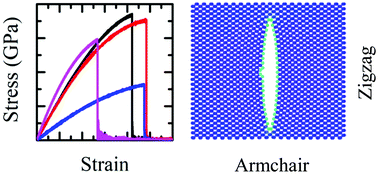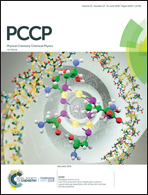Critical fracture properties of puckered and buckled arsenenes by molecular dynamics simulations
Abstract
The pioneering prediction and successful synthesis of monolayer arsenene in recent years have promoted intensive studies on this novel two-dimensional (2D) material. Strain-engineered arsenene monolayer can change its geometric structures with tuned charge distribution, which paves the way for achieving novel electronic properties. The practical applications of the strain-driven topological state in arsenene strongly depend on its critical strain value. In this work, mechanical properties such as fracture strain, fracture strength and Young's modulus of two arsenene structures, i.e. buckled arsenene (b-arsenene) and puckered arsenene (p-arsenene), are comprehensively investigated under different modulators such as system dimension, chirality, temperature, strain rate and random surface defect. A maximum fracture strain reduction of 41.7% from 0.24 to 0.14 is observed in armchair b-arsenene when the temperature increases from 100 to 500 K. The most significant impact factor on the mechanical properties of arseneneis found to be surface defects. A maximum fracture strength reduction of 85.7% is predicted in the armchair b-arsenene when the defect ratio increases from 0 to 5%. On the other hand, the strain rate has a negligible effect on the mechanical properties. Our results provide fundamental knowledge on the critical fracture properties of arsenene.



 Please wait while we load your content...
Please wait while we load your content...